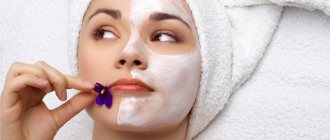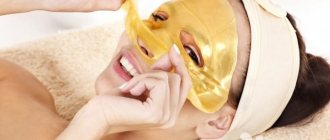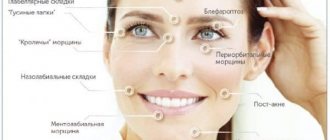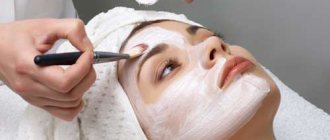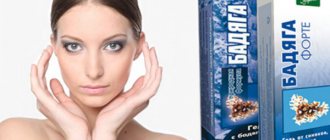Activated carbon is the most common drug in the world after ascorbic acid. It is used in gas masks, water filters and fertilizers, in pharmaceuticals and dentistry, and added to ice cream, pizza and face masks. And in the beauty industry this substance enjoys well-deserved authority. Carbon provides a powerful detox effect, is able to “calm” inflammation, and regulate sebum production. The most popular procedure using the drug is facial cleansing with activated carbon.
Benefits for the skin
Wood ash is “activated” at temperatures above 600°C, acquiring a negative electrical charge and the ability to attract positively charged molecules of gases and toxins.
By the way, this substance was first synthesized by the Soviet chemist Zelensky back in 1916. It has been successfully used as a filter in gas masks for respiratory protection.
Carbon has high surface activity and belongs to the group of physicochemical antidotes. It binds salts of heavy metals, adsorbs drugs, poisons and toxins of animal, bacterial and plant origin.
The human epidermis has its own mechanisms for cleansing and maintaining lipid balance. But they are imperfect, because the primary function of this organ is to protect internal tissues. Evolutionarily, skin does not have to be clean, smooth and photogenic to support life.
In the epidermis of every person, natural flora “live”: mites, viruses, fungi and bacteria. They produce toxins in the process of life, plus the skin regularly resists external pollutants.
Simple washing and standard cosmetic products do not always help to fully cleanse this important organ. Therefore, regular cleaning is an integral element of modern care.
Indications for use
Activated carbon has a cleansing, adsorbing, sebum-regulating and decongestant effect. At least these effects have been proven empirically and experimentally.
Progressive cosmetologists classify the ability of charcoal to treat acne, rejuvenate and tighten skin, and whiten age spots as a household myth.
Cosmetologists prescribe masks with charcoal in the following cases:
- comedones and blackheads. A charcoal mask can be applied after regular mechanical cleaning or instead of it;
- rashes of non-bacterial etiology (insect bites, reactions to cosmetics, contact dermatitis). Carbon absorbs and removes toxins and allergens from pores, soothes inflammation, relieves itching;
- after hair removal or injections using external anesthetics to accelerate their external adsorption;
- for renewal and exfoliation if peelings with acids are contraindicated.
Contraindications
Despite the safety of the drug, charcoal masks should not be used if:
- there is a predisposition to allergic rashes or intolerance to the components of the mask;
- there are abrasions and cuts, as well as open wounds and ulcers;
- there is a rosacea network on the face;
- there was a surgical intervention on the skin, and the stitches had not yet dissolved and healed.
If you have undergone chemical or mechanical facial cleansing before undergoing a cosmetic procedure, it is recommended to postpone the application of a charcoal mask for a week.
The essence of the cleaning procedure
Carbon itself “pulls” toxins and excess moisture out of the pores, but the scale of its action depends on the method of application.
Film mask
A mask is applied to the steamed skin, after a few minutes it hardens, and then the film is removed along with the contents of the pores and particles of dead skin. This procedure is a relatively safe and sterile alternative to mechanical cleaning with an UNO spoon.
The basis of the mask is activated carbon, essential oils for disinfection (tea tree, lavender) and a thickener (gelatin, carrageenan, PVA, silicone).
Clay mask with charcoal
The procedure is carried out mainly after mechanical cleaning to remove residual impurities, toxins, tighten pores, and remove oily shine. The clay mask is applied in a thin layer and washed off with a sponge after it has completely hardened.
Delicate cleaning
This life hack is often used not by cosmetologists, but by makeup artists and advanced cosmetics users. The delicate cleaning procedure is simple - apply a fabric or hydrogel mask with carbon, it “pulls out” dirt (not as effective as a foam mask), tightens pores, mattifies the skin, removes excess toxins and moisture, and relieves swelling. The skin after the mask is cleaner, smoother, and makeup fits better on it.
Charcoal patches under the eyes are a popular remedy for combating puffiness of the eyelids.
Important! Dermatologists do not recommend abrasive cleansing or scrubbing, including using carbon fiber. They provoke microdamages and increase the sensitivity of the epithelium.
Impact result
As a cosmetologist, I must say that deep cleansing your face with activated charcoal will not work. This is a superficial substance and you should not expect miracles from its use. Moreover, due to its high adsorbing ability, it is completely pointless to combine it with most of the mask ingredients we are used to - charcoal simply will not allow them to work.
However, if you use this tool wisely, you can really get some good effects:
- cleanse the epidermis of keratinized dead cells;
- normalize the activity of the sebaceous glands;
- eliminate unpleasant oily shine on the face;
- remove excess sebum from pores;
- carry out high-quality skin detoxification;
- even out its relief and tone;
- smooth out shallow wrinkles;
- refresh your complexion.
After using activated charcoal in masks and peelings to cleanse the face, the skin smoothes out and literally begins to glow. But this is only a short-term result that will have to be maintained with regular comprehensive care.
Additional Ingredients
Activated carbon is most effective when used alone. It is a binding agent, its adsorbing effect is non-selective. In tandem with other ingredients, it binds all active substances and can neutralize the benefits of other components.
Therefore, the instructions for use indicate that it is necessary to maintain an interval of 2 hours between taking charcoal and other drugs.
It is unprofitable to combine charcoal with acids (including in the popular recipe with aspirin), emollients, moisturizers, and vitamins.
It is advisable to combine charcoal with other adsorbent and sebum-regulating ingredients: clay, kaolin, essential oils of rosemary, peppermint, lavender. To adsorb toxins and poisons after insect bites and allergens from low-quality cosmetics, activated carbon is recommended to be mixed with neutral oils.
The American recipe uses coconut oil. For those with problem skin, it is better to take jojoba or grape seed oil. 1 tablet of coal + 0.5 tbsp. l. oil onto a cotton swab and onto the damaged area.
Dairy
Using milk products is the most effective way not only to eliminate blackheads, but also to get healthy, velvety skin, cleared of rashes and blemishes. The only requirement is to prepare the formulations using a high-quality homemade product; store-bought milk contains significantly fewer elements useful for the epidermal tissue.
Preparation:
- Combine the crushed tablet of the drug and rice flour (10-12 g).
- Pour in warm milk (15 ml), leave for a quarter of an hour.
- Before use, pour in the nut oil and add a pinch of cinnamon powder.
It is advisable to pre-steam the skin (steam bath, compress soaked in herbal decoction). It is not necessary to scrub the dermis - a milk product will perfectly cleanse the face. Distribute the composition and leave for 10-14 minutes. Be sure to use warm liquid for rinsing.
Cleaning efficiency
The main feature of this procedure is not the instant “WOW” effect, but safety. It is difficult to trace how toxins and radicals are removed from the skin.
But charcoal is not a placebo; its properties as an antidote have been proven many times. just shouldn’t perceive activated carbon as a universal component “for everything.”
Acid and enzyme peels provide a more pronounced effect of renewal, tone and relief, and exfoliation. But, if they are contraindicated, you can keep your skin clean with carbon masks.
Attention! Carbon cleaning is a symptomatic treatment. The drug absorbs toxins and excess sebum here and now. It does not provide a prolonged effect, either externally or internally. Therefore, there is no real need for a course of treatment.
Activated carbon face mask: effectiveness and effect on the skin
Activated carbon is a substance produced by burning wood. For this, birch, oak, pine, spruce, poplar and other trees are used. When burned in wood, chemical processes occur that affect the subsequent properties of activated carbon.
The production of activated carbon includes processes that do not affect the preservation of the beneficial properties of the final product. It consists of hydrocarbon, oxygen and hydrogen. It is this combination of elements that affects the effectiveness of the drug.
Activated carbon affects the processes occurring in the skin at the cellular level. For a mask to be effective, it must be used regularly in the form of skin masks.
Effectiveness of a mask based on activated carbon:
- Affects the functioning of the sebaceous glands, which has a beneficial effect on all skin types. A charcoal mask helps reduce the amount of oil produced, thereby preventing the formation of congestion. It is the presence of traffic jams that affects the appearance of acne, pimples and blackheads. The absence of excess fat has a beneficial effect on the dullness of the skin.
- Charcoal-based masks relieve inflammation, relieve the skin of acne, rashes and other inflammations. It also disinfects the affected areas of the skin, which prevents redness and irritation in other areas.
- Coal helps the skin gain a healthy color, removes yellowness and excessive pallor.
See also
A healthy egg face mask works wonders
A mask based on activated carbon requires regular use. Only in this case can it have an effective effect on the skin.
How to prepare your skin
Before the procedure, it is necessary to open the pores as much as possible in order to enhance the penetration of carbon particles and scale up the detox effect.
Cosmetologists often perform delicate carbon cleaning after peeling, when the pores are already open.
Preparatory procedures:
- easy cleaning of pores using micellar water or hydrophilic oil;
- exfoliation of dead cells with an enzyme tonic, rolling mask or light scrub with very fine abrasive particles;
- opening pores with a hot towel or warming mask;
- degreasing and pre-cleaning with neutral Ph foam.
Honey against acne
Bee honey is a unique product that contains substances that have a beneficial effect on all skin problems. With the help of this component it is easy to get rid of rashes, acne, and cleanse the dermis of inflammation.
At the same time, the bee product saturates the tissues with useful elements, has a positive effect on the external condition of the face - wrinkles begin to smooth out, a layer of fat, dust, and dead cells is removed.
Preparation:
- In a mortar, crush 3 tablets of the drug, bee bread (5-7 g).
- Bake, wrapping in foil, 1 medium potato, remove the skin, and puree.
- Combine both masses, add good honey (5-8 ml), preheated in a steam bath or in the microwave.
Expert opinion
TRY IT!
Be sure to start applying from problem areas covered with acne or rashes. After distributing the composition, rest for a quarter of an hour, rinse with warm liquid (water, herbal decoction).
Features of the procedure
When cleaning with film, the only rule you need to follow is to apply the mask only to areas where there are actually clogged pores (mainly the forehead, nose and T zone). It is not recommended to use such a mask around the eyes, lips, or around the perimeter of the face, as it stretches the skin when removed.
It is recommended to apply the product locally, to small areas, and not as a continuous “cake”, so as not to stretch the skin unnecessarily.
Wash off the remnants of a film mask or clay mask delicately with a soft, porous sponge.
Rules for applying masks
At first glance, it may seem that applying a mask is not difficult. In fact, you need to adhere to some nuances:
- It is necessary to apply the finished product to previously prepared skin: first remove makeup, then cleanse from impurities, then steam.
- The mass is applied to the face by massaging the pads with your finger or using a spatula. Particular attention should be paid to the T-zone and chin.
- After applying the mask, it is recommended to refrain from excessive facial activity and remain calm and relaxed.
- There is no need to keep the composition on your face for longer than the prescribed time. Usually the procedure takes no more than 10-30 minutes.
- The maximum course of charcoal treatments is 6 weeks. Re-use of coal is possible only after 2 months.
- It is recommended to make a face mask with activated carbon no more than 1-2 times a week.
- It is recommended to remove the mask along the massage lines, rolling from top to bottom. After removing the composition, wash with warm or cool water.
Important! You should not go out into the sun immediately after the charcoal procedure for at least two to three hours. It is also necessary to refrain from leaving the house if there is high humidity or elevated air temperature outside.
Skin care after cleansing
After the “film”, slight redness is possible. But even sensitive skin tolerates the cleansing procedure well.
The treated area should be thoroughly disinfected with chlorhexidine or miramistin, and a soothing cream with aloe, chamomile or snail extract should be applied.
After the procedure, it is necessary to minimize surface contamination of the skin: do not touch your face with dirty hands, wash off makeup in 2 stages (oils + cleansers), sleep on a clean pillow.
From the dirt
1. Classic
Well, everything is generally simple here: take two tablespoons of mud powder and add as much water to them as you need for a creamy state. The water, by the way, should be warm and filtered (or at least not dirty).
2. Sea buckthorn and chamomile
For a mask with such a romantic name, you will need one teaspoon of mud powder, a little crushed chamomile from the pharmacy and about the same amount of sea buckthorn oil, which will need to be mixed.
3. Dairy
Mix two tablespoons with warm, just warmed milk. That's all.
4. Herbal
You need to dissolve two tablespoons of mud powder in a tincture of dried chamomile flowers and mint leaves, which, in turn, need to be taken one tablespoon at a time.
Cleaning at home
Activated carbon is a unique remedy; it is more often used at home rather than in salons. Masks with this component are sold in every supermarket. You can make a film mask at home.
Film mask recipe
1 tablet of activated carbon, 1 tsp. gelatin, 1 tsp. water. Melt the gelatin, add finely ground charcoal. Apply the finished mask immediately before it hardens.
Important! A slight feeling of “tightness” while the mask hardens is normal. But burning and discomfort are a reason to quickly wash off the product.
Clay mask recipe
1 tbsp. l. blue or green clay, 1 tablet of coal, add water to make a creamy mass. Apply a thin layer, rinse after complete drying.
Precautionary measures
There is hardly a specialist who is ready to call charcoal the most magical and effective SOS product for the skin. But it is one of the safest and most versatile. Coal has virtually no direct contraindications.
The popular science magazine Authority Nutrition provides the following explanation for the safety of the substance:
“Carbon is not absorbed by the body, does not penetrate the pores, does not enter the bloodstream, and acts exclusively on the surface. It binds and removes toxins without changing their chemical structure.”
Patient reviews
Most girls speak positively about the experience of “charcoal cleaning”.
But the process of removing the mask causes significant discomfort for some.
And if overused, there may be side effects associated with stretching and dehydration of the skin.


